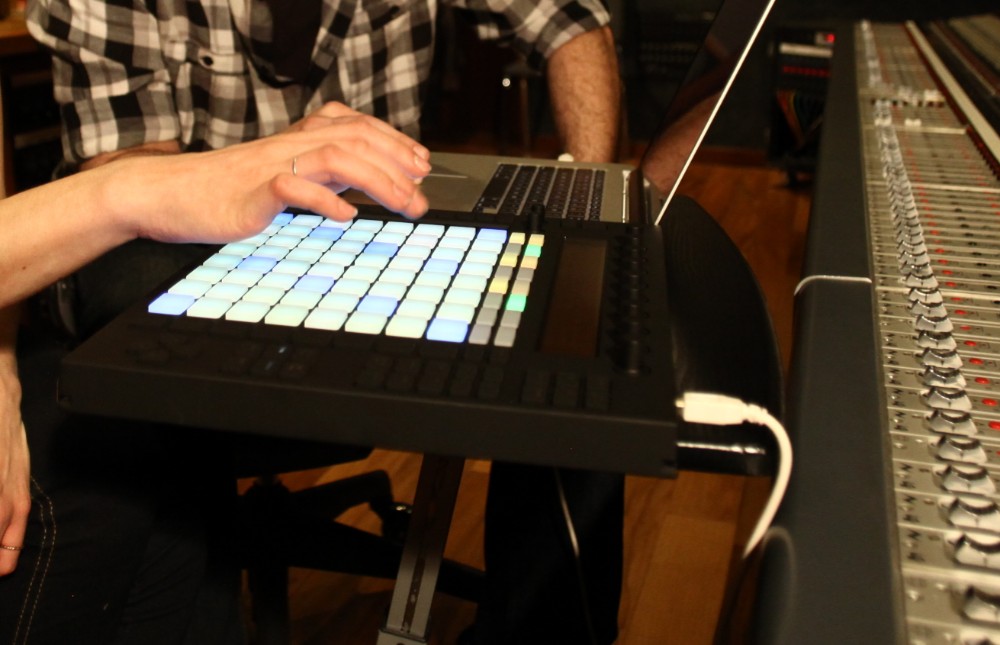How To Record Automation In Ableton
 Most digital audio workstations (DAWs) use automation to automatically control parameters on a session or arrangement view of a song. This could be the volume, faders, filters, or any other installed or third-party plug-in. Automation is often used to keep a track from sounding too repetitive or providing punch.
Most digital audio workstations (DAWs) use automation to automatically control parameters on a session or arrangement view of a song. This could be the volume, faders, filters, or any other installed or third-party plug-in. Automation is often used to keep a track from sounding too repetitive or providing punch.
In Ableton Live, almost every parameter in the interface or library of effects and plug-ins can be automated. This gives you massive control over how your music will sound and provide real professionalism to the final product. We recommend that you familiarize yourself with the basics of Ableton (or any DAW) before working with automation in earnest.
Recording Automation in Ableton
You’ll do this when you want to record notes on top of existing notes that have already been laid down. Two ways of doing this: grab the parameter with the mouse and track the motion of moving that parameter or you can map the movement of the parameter with a MIDI controller.
Using the mouse is handy when you want to record automation quickly or you’re on the move without any external gear, such as a MIDI keyboard. In either case, you’ll be working in the arrangement view of Ableton when recording a session.
Automation mode is enabled by hitting the “A” key on your keyboard or by selecting the automation icon above the tracks. This will display the automation lanes on each track. This will also ensure that the existing tracks won’t be recorded over. Then choose which parameter you’d like to automate.
Creating Automation in Ableton
There will be a red line that appears on the arrangement view–this is where you will control your automation envelope. There are two ways of handling the automation: with draw mode enabled or disabled. When enabled, you can click and draw an envelope as you see fit, giving you more control of the recording.
When disabled, an envelope will appear with draggable breakpoints. This allows you to change the length of the envelope as you see fit. There are also a number of preset curves that you can insert into the view. Highlight the area in the automation lane where you want to insert a curve and then choose that curve.
Record Automation in Ableton
When you’re ready to record, choose the automation arm at the top of the arrangement view. Then enable the MIDI arrangement overdub option found next to the automation arm. Now you can make changes to the automation data without affecting the existing midi notes or clips.
Now you are ready to record. Hit the record button and the automation will be recorded along with the changes you’ve made to the automation. The parameters you’ve chosen to automate will appear with a little red dot. You can use the keyboard or the MIDI controller in Ableton.
Automation Options
You can automate pitch either by drawing in pitch changes in the arrangement view by using the note editor or the clip view. To automate the pitch with the MIDI controller, use the note editor and use the MIDI Ctrl and Pitch Bend options. To automate the clip, you’ll open the clip view and select Clip and Transposition under the envelope heading.
You can also automate the tempo of the master track to change the beats per minute (BPM). This is done by enabling Automation Mode by hitting the “A” key or selecting the automation icon. Click the triangle next to Master and two options will appear: choose Mixer and Song Tempo.
Now you can create automation breakpoints by turning off Draw Mode and holding shift while adjusting the different breakpoints. Don’t forget to change the tempo range. You can also stretch or skew your envelopes for even more control. You can alter the height and length of your envelopes.
Learn How to Record Automation in Ableton from Industry Insiders
This is a relatively advanced aspect of Ableton Live, but can really take your recordings to the next level. If you’re just starting to learn this powerful piece of software, it can be a little overwhelming. But if you’re interested in pursuing a career in the music industry, consider applying to Recording Connection.
We place you in a real-world recording studio so you can learn one-on-one from an audio engineer, music producer, DJ, and others already earning a living in music. Our Ableton Electronic Music Production Program will give you the foundation you need to create a career in making music. Apply today.




